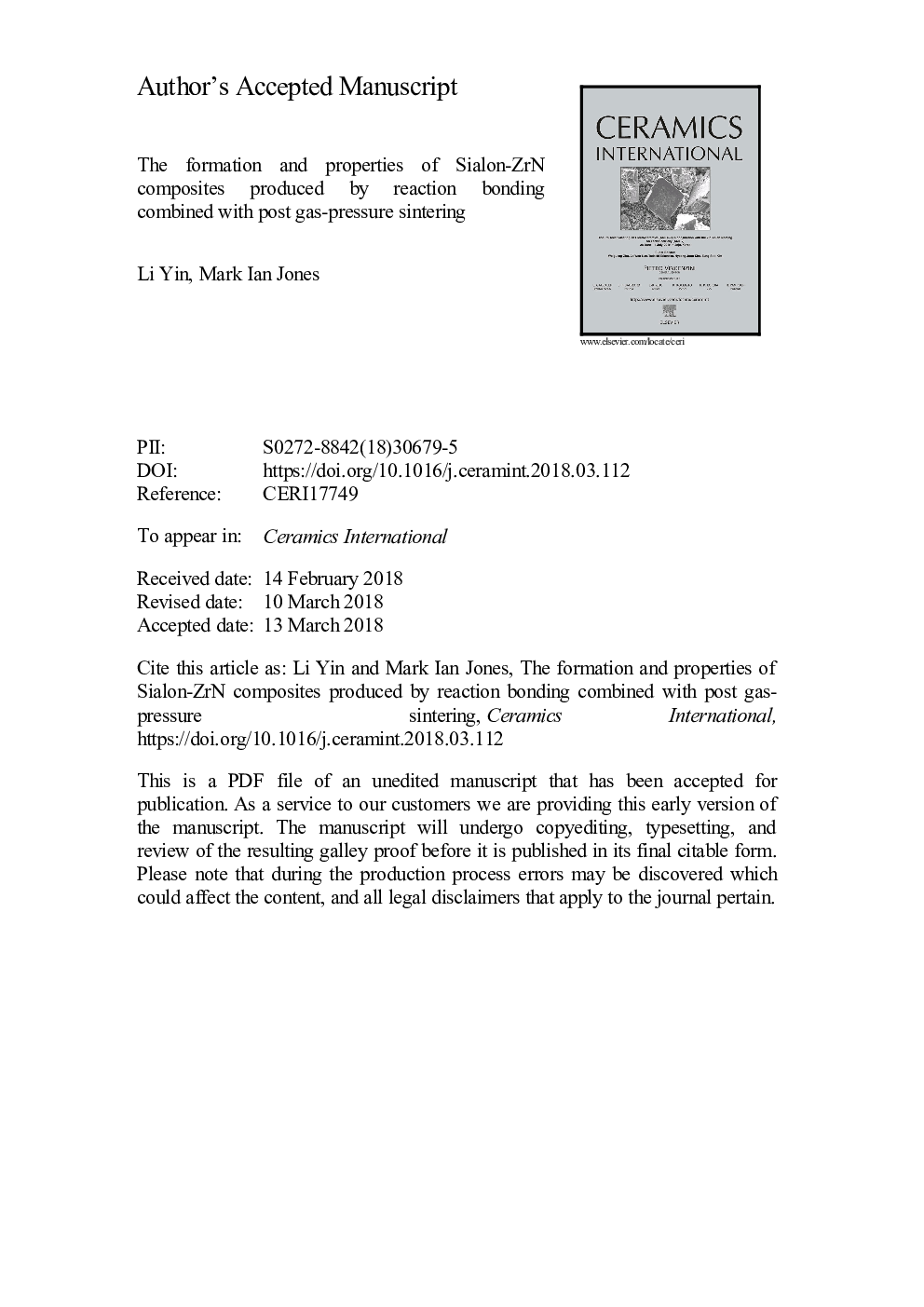| Article ID | Journal | Published Year | Pages | File Type |
|---|---|---|---|---|
| 7887342 | Ceramics International | 2018 | 36 Pages |
Abstract
Sialon-ZrN composites have been fabricated by a combination of reaction bonding and post-gas-pressure sintering. Composites with different amount of ZrN were post sintered at 1600, 1700 and 1800â¯Â°C under a nitrogen pressure of 0.7â¯MPa for 6â¯h. The results showed that mass loss due to decomposition increased with increasing sintering temperature. The mass loss at 1600 and 1700â¯Â°C was comparable, and below 3% even for the highest ZrN content of 50â¯wt%, but ranged between 6% and 9% for samples post sintered at 1800â¯Â°C with 10-50â¯wt% ZrN. Composites sintered at 1700â¯Â°C had the highest relative density (> 97%) and lowest open porosity (< 2%), and this was independent of ZrN content. The incorporation of the ZrN particles was observed to have an effect on the mechanical properties of the composites. The highest hardness (16.05â¯Â±â¯0.17â¯GPa) was observed for the composite sintered at 1700â¯Â°C with 20â¯wt% ZrN but decreased with higher ZrN contents, due to a weak bonding between the ZrN particles and the Sialon matrix. The fracture toughness showed a continuous increase with increasing ZrN content, due to the effect of the weak bonding on toughening mechanisms such as crack branching, crack deflection and crack bridging. The highest fracture toughness (5.35â¯Â±â¯0.18â¯MPaâ¯m1/2) was observed for the composited sintered at 1700â¯Â°C with 50â¯wt% ZrN.
Keywords
Related Topics
Physical Sciences and Engineering
Materials Science
Ceramics and Composites
Authors
Li Yin, Mark Ian Jones,
